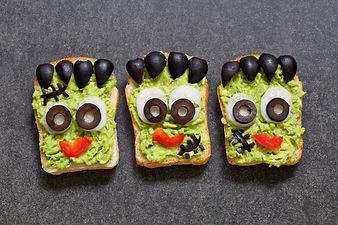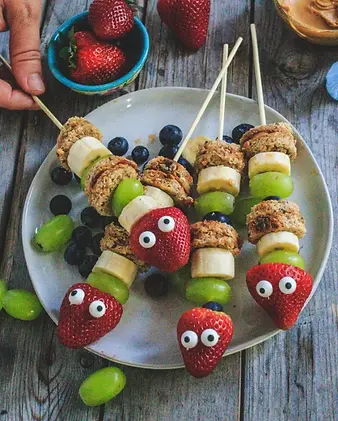Food Play Group for 4-6 Year Olds
Food Play Group is a collaborative allied health initiative that includes an Occupational Therapist, Taylah Cabrera from Finding Foundations, and a Paediatric Dietitian, Kate Annat from Cubs Paediatric Dietetics. Our focus is on assisting families and children dealing with selective eating.
Before joining the group, an initial assessment will be conducted by Finding Foundations, Cubs Paediatric Dietetics, or Brisbane Feeding Clinic to determine the suitability of your child. Some children may not be ready for group participation or may require individualised support. If you are already known to us, we don’t require an initial assessment.
As clinicians, our primary goal is to address the underlying reason for your child’s feeding challenges, before introducing group based feeding therapy. This could include concerns related to airway, posture and gross motor skills, allergies, nutritional deficiencies or oral motor skills. It is crucial to address these areas first as they are the starting point for your child feeling well, having stronger appetite, and feeling more ready to engage with food. Please refer to my Feeding Therapy page regarding for a more indepth summary of what to expect.
Our therapeutic approach is based on the SOS Approach to Feeding, Responsive Feeding, and the Division of Responsibility by Ellyn Satter. This means that our first goal is to empower parents to recognize their child's readiness cues and teach them when to support their child in being exposed to new foods.
This might look like understanding the anxieties around food-related tasks (such as touching, smelling, holding, and eating) and learning how to give them the space and independence to interact with new foods at their own pace.
For the children, our aim is to expose them to new foods through play, creating positive experiences that lead to acceptance.
The therapy plan includes the following sessions:
Session 1:
Both parents and children participate, with one clinician engaging in play with the children, while the other supports parents in understanding cues and communicating with their child. This equips families with skills they can apply at home.
Our goal in session one is to use play based methods to get children to start interacting with foods. We will be teaching the parents on how to observe their child's cues as to when they may feel overwhelmed by the level of interaction with the food they are participating. Here is where we go up the 32 steps to eating. Observe their cues, then we reduce the level of exposure to allow the child to recover before building up the steps again.
Sessions 2-4:
Both clinicians participate in feeding therapy, guiding children to interact with foods at their own pace. Parent will be nearby observing.
Each week we will be doing a new food based play activity with the child where we bring them up and down the steps to eating. In doing so our goal is to demonstrate to the families that this method of exposure can be applied to any mealtime at home.
Remember it is not necessarily the food they are saying no to, but the degree of interaction we are asking of your child. For example they might say no passing the food to another child but would be willing to pass that same food with a fork.
Session 5:
In the final session, we encourage both parents and children to participate, providing families with the opportunity to practice feeding therapy skills with their children, ready to apply them at home.
Here we will encourage families to bring their child up the steps to eating, watch for their cues and then reduce the level of exposure at their own pace. In this we hope to provide families with the skills to apply these techniques at home.



FAQ's: Your questions answered.
What is the cost of a Feeding Therapy Intensive?
We are charging $100 per session. This includes the cost of BOTH clinicians. The sessions run in 5 week blocks. So in total you can expect to pay $500 for the 5 week period.
How does using the steps to eating help in feeding therapy?
The SOS approach to feeding explains that there are 32 steps involved in deciding to eat a food. Offering a child a brand new food is like offering them a spider and asking them to eat it..... it is a flat no right? The other way I like to explain this for adults is this.
Imagine that holiday you went on in a foreign country, you are seated an a restaurant and you are encouraged to try a local dish. It comes out and it looks so unusual and not at all what you were expecting you become unsure if you want to try it. Now picture that meal for me. I am imagining squid ink risotto and snails.
What was your first response? Did you stare at it for a bit. Did you look over at other tables to see if someone else was eating it. Did you smell it? Take a teeny tiny tentative bite? Did you spit it out? When something is new to us we subconsciously go through these little steps to help us making a decision as to whether we will eat it or not. The 32 steps to eating helps children go through the steps in a play based manner.
By the time you have decided to attend feeding therapy I can imagine things are home seem pretty dire. Mealtimes are a mess, there is a lot of anxiety for you and your cub. You are feeling like you are at a loss of where to from here.
What we teach you is how to read your child. How to pick up on all the cues that your child is showing you before they hit the meltdown phase. If families can learn on how to read and respond to their child's cues it will be a happier mealtimes. We will teach you what to look for, how to reduce the pressure at the mealtime and then how to increase exposure.
How does the Division of Responsibility help in feeding therapy?
Again check out my feeding therapy page for a more detailed response to this question but here is a run down. Sometimes a mealtime turns into a battle of wills. Your child wants to eat what they want and you want them to eat vegetables. Both you and your child are feeling unhappy that they aren't getting what they want from the mealtime.
The division of responsibility aims to change expectations and give the child the independence to eat what they want at their pace. And the parents to be able to have their family enjoying a family meal where everyone can eat the same bloody meal.
What I teach families is we need to be able to let children choose what they want to eat from the options the parent provides. Half the battle in my experience is relinquishing control. Trusting your child to choose their own foods and as a parent allowing them to do so.
I often say things like 'if you stop caring what they eat, they will stop caring too'. Which helps to reduce that battle ground that has become mealtimes. If you can truly trust the process a always find a happier mealtime is the result. You get to pick the what and the when of what your child eats and they get to pick if they want to eat at all and how much.
What are the benefits from group feeding therapy versus 1:1 sessions?
Number one. Cost. In these groups you will being paying $100 dollars per session for two therapists versus the $400 dollars you would pay for an individualised session.
Number two. Modelling. We know that when kids are playing together the modelling they get from interacting with foods together can be a big driver to attempting new things that they might not try at home with the family. Accordingly the new foods that they start to interact with in therapy can then be applied at home.
Availability & Location
MONDAY & WEDNESDAY
Face to face & Telehealth
9 am to 1pm Monday
9 am to 4 pm Wednesday
Wavell Heights Clinic
1 Zeehan Street, Wavell Heights
TUESDAY & THURSDAY
Telehealth ONLY
9 am to 4 pm


